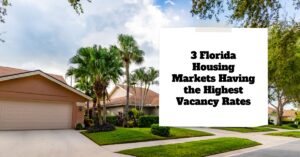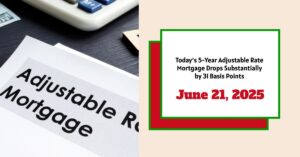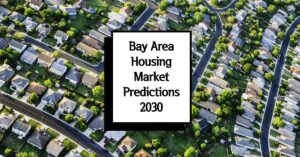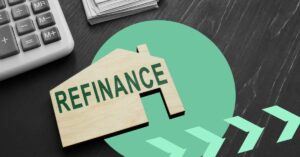Is finding the perfect place to live feeling like searching for a needle in a haystack? You're not alone. Many people are struggling with housing costs and availability. While some areas are facing tight markets and rising prices, there are pockets where you might find more options. According to LendingTree's analysis of the U.S. Census Bureau 2023 American Community Survey, three Florida housing markets stand out for having the highest vacancy rates: Cape Coral, North Port, and Lakeland. These areas offer a larger selection of available homes compared to other parts of the Sunshine State and the nation.
Buying a home can be overwhelming, especially as a first-time buyer. With all the market changes, you might wonder where you can get the most for your money or simply find a place to call home. I get it – I've seen firsthand how tricky the real estate world can be as an investor and someone who's closely followed market trends for years. Let’s dive deeper into why these Florida markets have such high vacancy rates and what it could mean for you.
3 Florida Housing Markets Having the Highest Vacancy Rates
Why Florida?
Florida's real estate market is famous for being dynamic, to say the least. People flock here for the warm weather, beautiful beaches, and lack of state income tax.. This constant influx of new residents inevitably impacts the housing market. However, increased building can lead to higher inventory in some regions.
Cape Coral, FL: A Vacancy Rate Leader
Key Data:
- Vacancy Rate: 25.72%
- Housing Unit Approvals: 35.82 per 1,000 units
Cape Coral consistently grabs headlines with its impressive vacancy rate. At over 20%, it overshadows many other areas in the U.S. What causes this high vacancy? The main reason is a wave of new construction. A large number of housing unit approvals means that there's a constant supply of new homes hitting the market. This benefits buyers and renters, giving them more choices.
My Thoughts: From an investment perspective, Cape Coral could present a mixed bag. Yes, the high vacancy rate might mean lower prices or more negotiating power. However, consider that the high supply might subdue appreciation in the short term. People who want to customize are attracted towards new construction in Cape Coral.
North Port, FL: Second Highest Vacancy
Key Data:
- Vacancy Rate: 21.23%
- Housing Unit Approvals: 31.46 per 1,000 units
Following closely behind Cape Coral is North Port, with a vacancy rate also exceeding 20%. Similar to its neighbor, North Port has seen substantial construction activity.
What's driving the North Port Vacancy:
- Rapid Development: North Port is a rapidly growing city. New communities are being developed.
- Demand and Supply: Although many people are trying to find their place in the Sun's city, there is more construction going on than demand.
My thoughts: North Port's growth is exciting, but it's important to analyze the long-term sustainability. Will demand keep pacing up with supply, or will these high vacancy rates last for a while? For potential homeowners or investors, researching the specific neighborhoods and planned developments is essential.
Lakeland, FL: Third Highest Vacancy
Key Data:
- Vacancy Rate: 16.11%
Lakeland has a relatively high vacancy rate.
Reasons Behind Lakeland's Vacancy:
- Construction boom: The continuing construction is leading to vacancies.
- Changing demographics: With more people moving to the suburb areas, it is seeing more vacancy.
My thoughts: The changing demographics in Lakeland may cause fluctuation in vacancy rates. Understanding these trends will be very important for both buyers and investors looking for long-term stability and growth in the area.
Why High Vacancy Rates Matter
High vacancy rates create a unique opportunity for buyers and renters to negotiate prices and find better deals.
Pros:
- Lower Prices: Increased supply often leads to more competitive pricing.
- More Options: Buyers and renters have a larger selection of properties to choose from.
- Negotiating Power: High vacancy rates can give buyers more leverage in negotiations.
Cons:
- Slower Appreciation: The increased supply can inhibit appreciation in the short term.
- Impact on Wealth Building: Slow appreciation leads to less equity
- Neighborhood Concerns: Very high vacancy rates may lead to concerns about community stability.
How to Take Advantage of the Opportunity
If you're considering buying or renting in one of these Florida markets, here's my advice:
- Shop Around: Don't settle for the first property you see. Take your time to explore different neighborhoods and compare prices.
- Negotiate: Don't be afraid to negotiate the price or rental terms. High vacancy rates mean sellers and landlords want to fill their properties.
- Due Diligence: Research the local market trends, planned developments, and potential future growth.
- Consider Long-Term Goals: Think about your long-term financial goals for the property, if you buy it.
Beyond Vacancy Rates: Other Market Factors
While vacancy rates are a useful indicator, remember to consider other factors like:
- Job Growth: A strong job market attracts new residents, which can impact housing demand.
- Economic Development: New infrastructure and businesses can increase the desirability of an area.
- Interest Rates: Changes in interest rates can affect affordability and buyer demand.
- Demographics: Shifts in demographics, such as age and income levels, can influence housing needs.
Expert Advice for Navigating the Housing Market
Here are some tips from industry experts that I find insightful:
- Matt Schulz (LendingTree): “Don’t fall in love with the first property you see. Get your credit in order. Build a strong emergency fund.”
I agree whole heartedly with Matt. Buying a home is a huge financial commitment, so preparation is key.
What does it all mean?
The 3 Florida Housing Markets Having the Highest Vacancy Rates: Cape Coral, North Port, and Lakeland, present unique advantages for buyers and renters. This means more options and negotiating power. Even with these advantages you need to do your research and also your due diligence. Consider all the factors and go for it.
Invest in Real Estate in the “Top Florida Markets”
Discover high-quality, ready-to-rent properties designed to deliver consistent returns.
Contact Norada today to expand your real estate portfolio with confidence.
Contact our investment counselors (No Obligation):
(800) 611-3060
Read More:
- 5 Big Florida Housing Markets Flagged for a Major Price Decline Risk
- 2 Florida Housing Markets Flagged for a Major Price Decline Risk
- 24 Florida Housing Markets Could See Home Prices Drop by Early 2026
- Is the Florida Housing Market Headed for Another Crash Like 2008?
- Key Trends Shaping the Florida Housing Market in 2025
- This Florida Housing Market Bucks National Trend With Declining Prices
- Florida Housing Market Crash 2.0? Analyst Warns of 2008 Echoes
- Tax Relief Proposed as Florida Housing Market Faces Deepening Crisis
- Is the Florida Housing Market on the Verge of Collapse or a Crash?
- 3 Florida Cities at High Risk of a Housing Market Crash or Decline
- Florida Housing Market: Record Supply Expected to Favor Buyers in 2025
- Florida Housing Market Forecast for Next 2 Years: 2025-2026
- Florida Housing Market: Predictions for Next 5 Years (2025-2030)
- Hottest Florida Housing Markets in 2025: Miami and Orlando
- Florida Real Estate: 9 Housing Markets Predicted to Rise in 2025
- 3 Florida Housing Markets Are Again on the Brink of a Crash
- Florida Housing Market Predictions 2025: Insights Across All Cities
- When Will the Housing Market Crash in Florida?
- South Florida Housing Market: Will it Crash?











